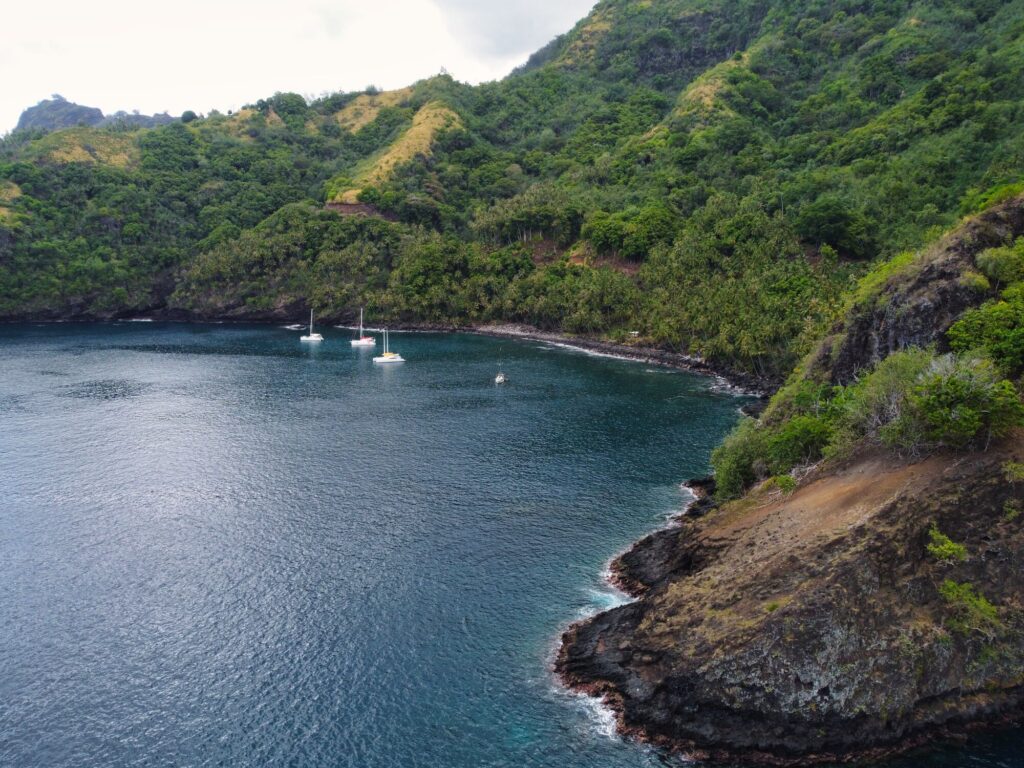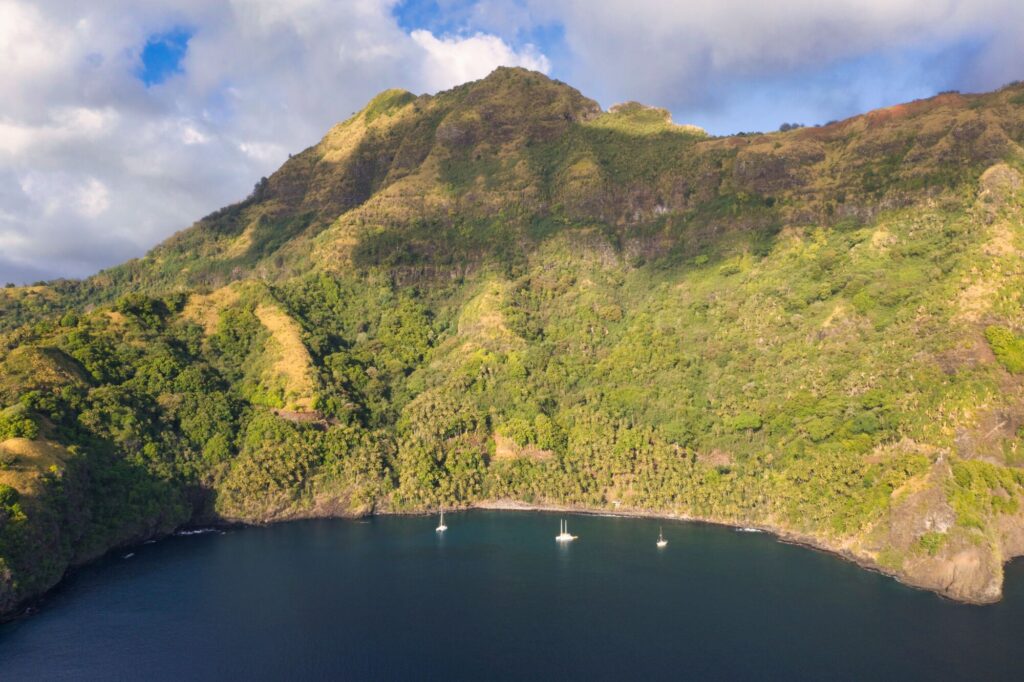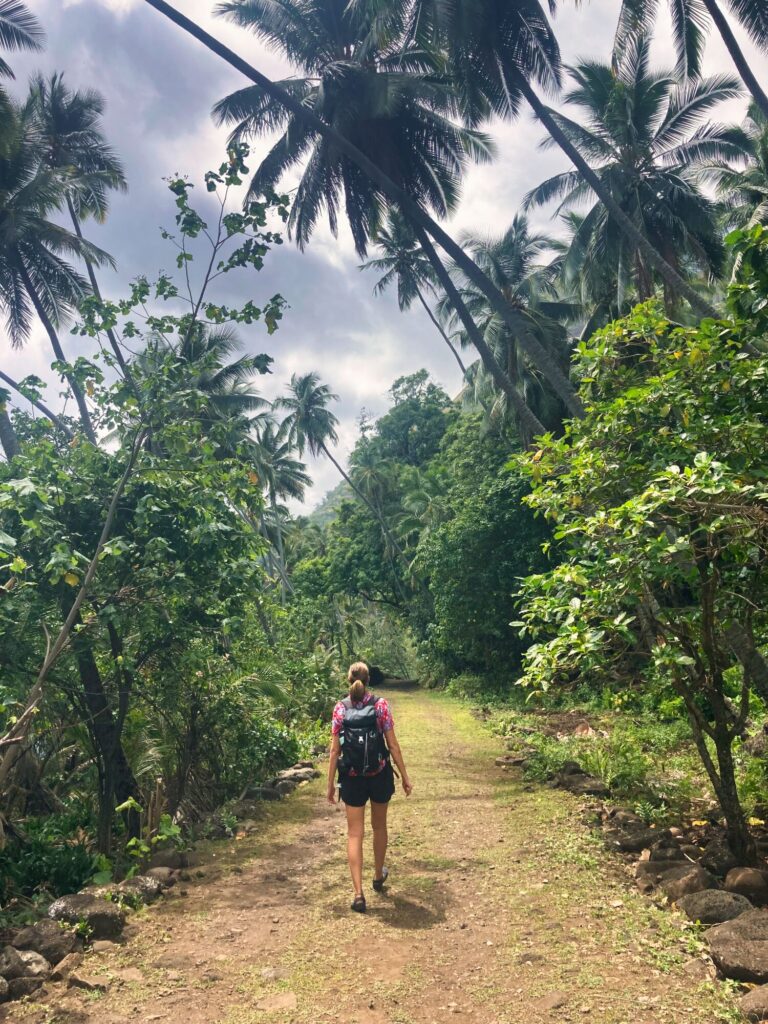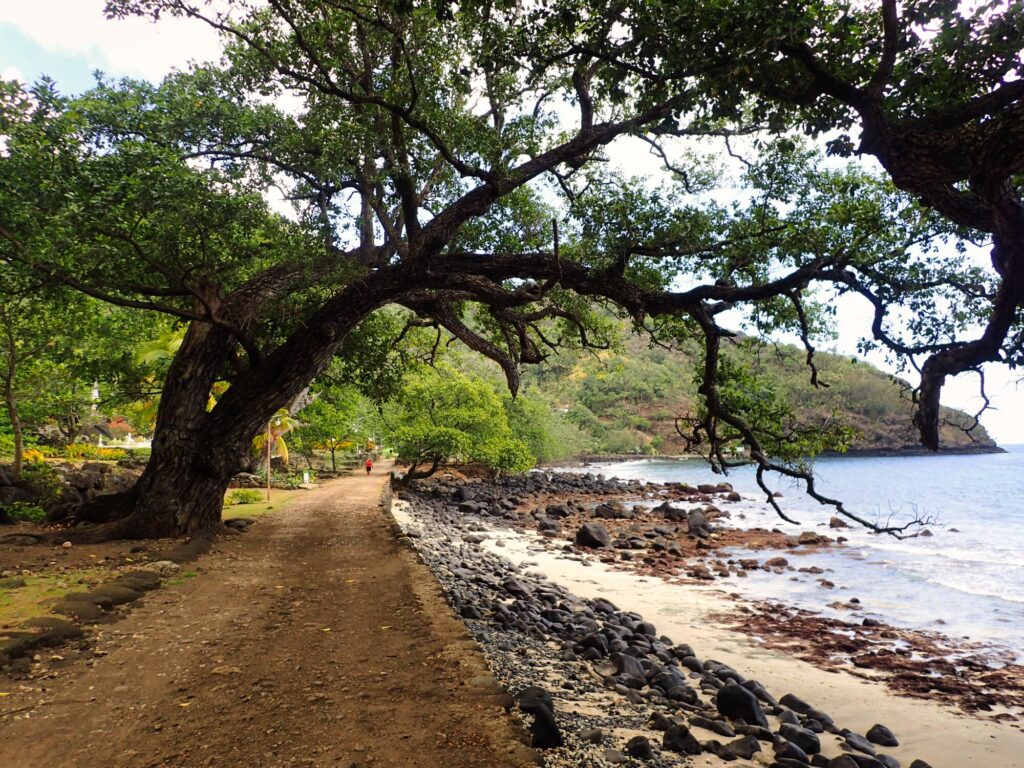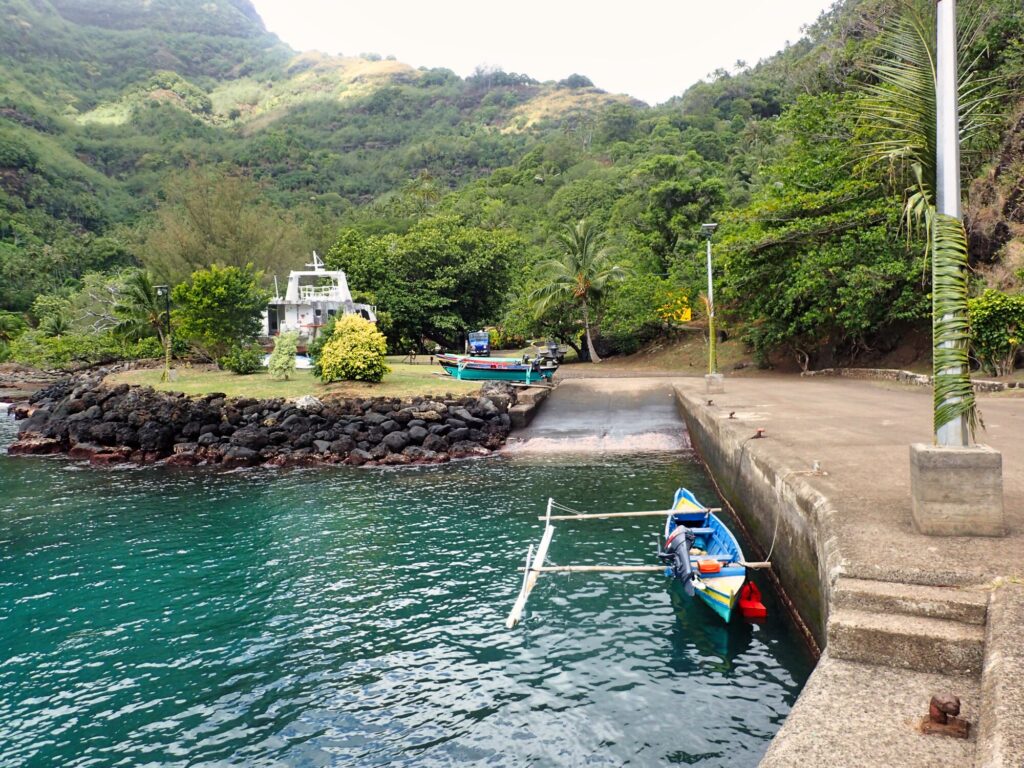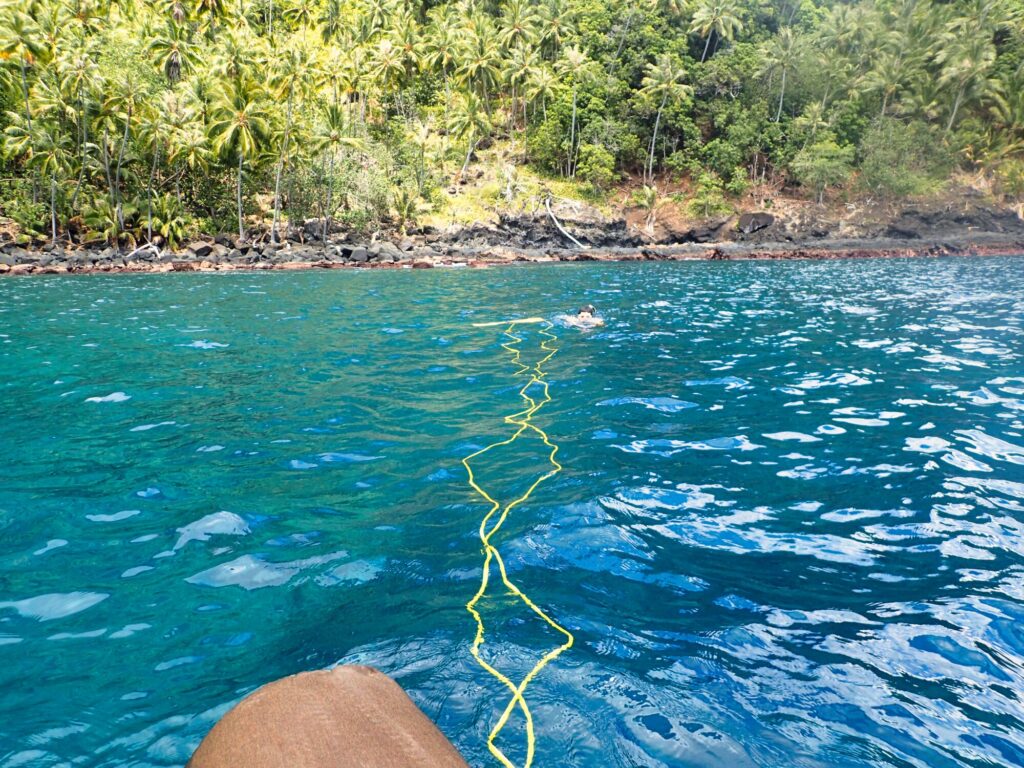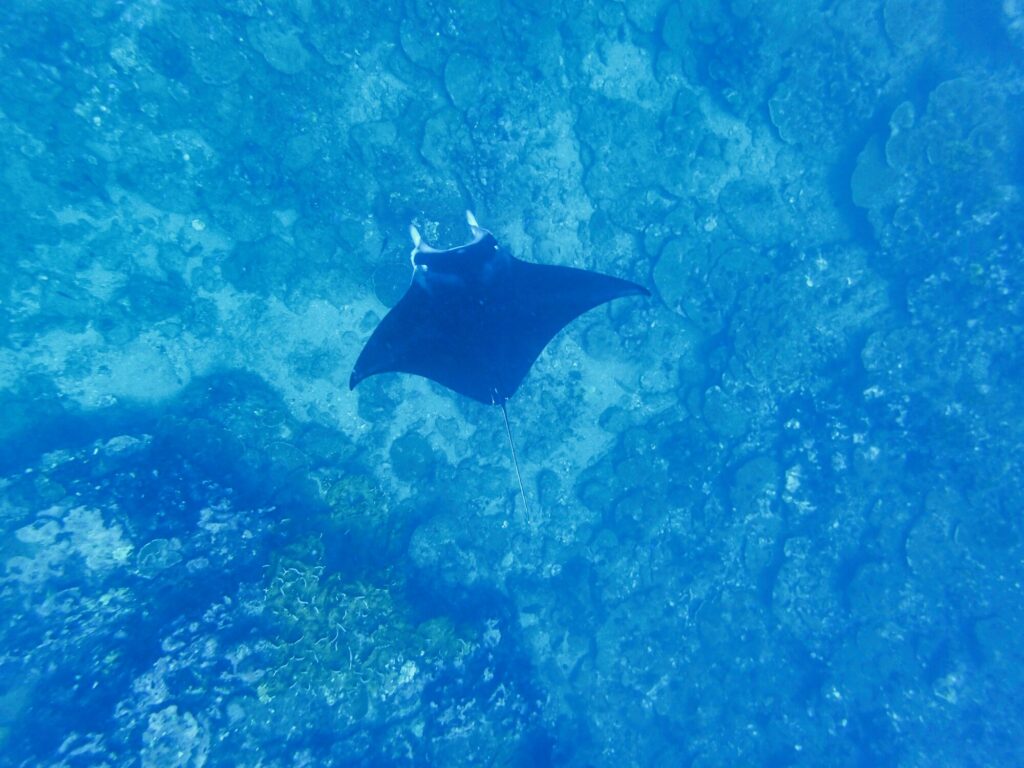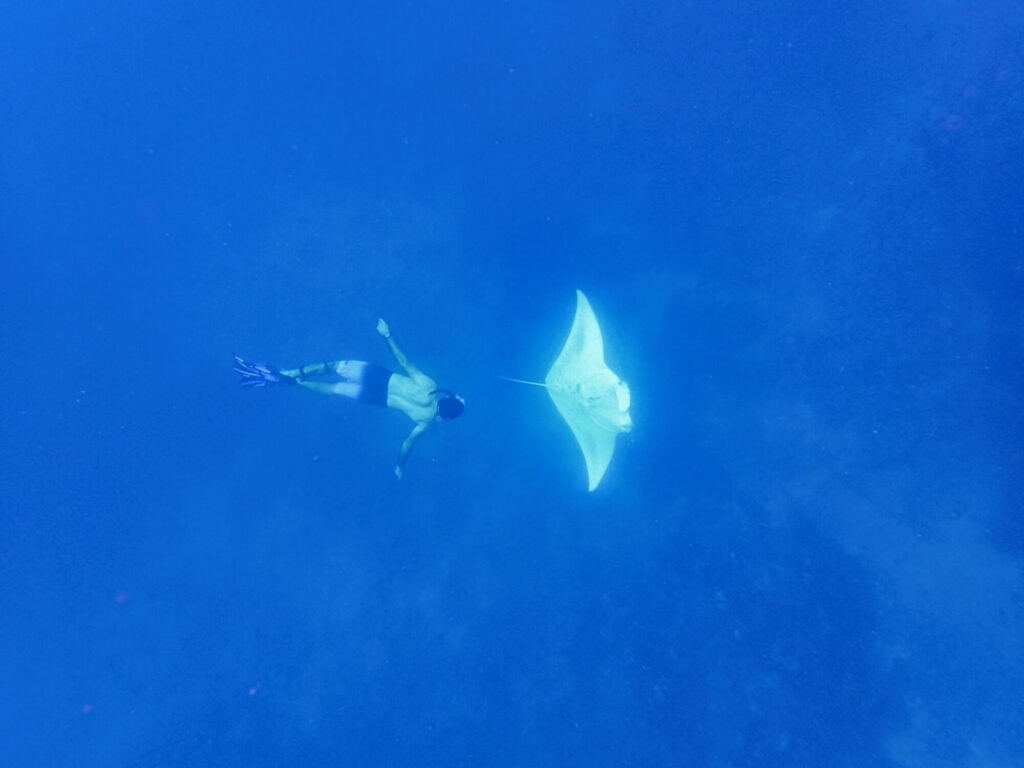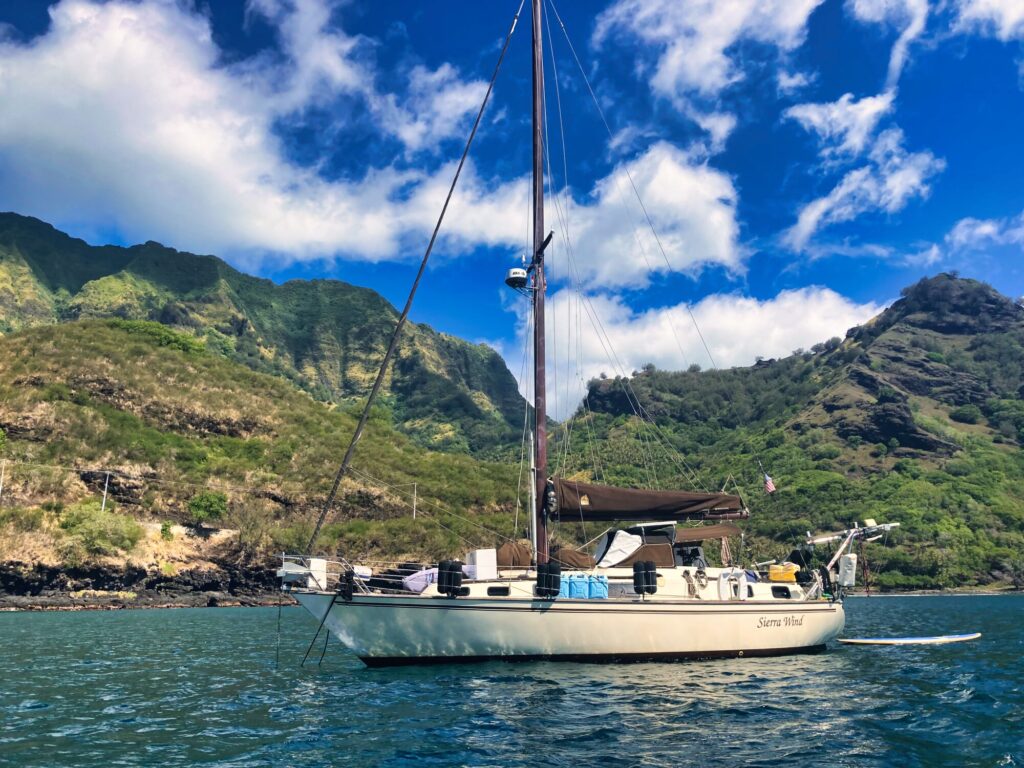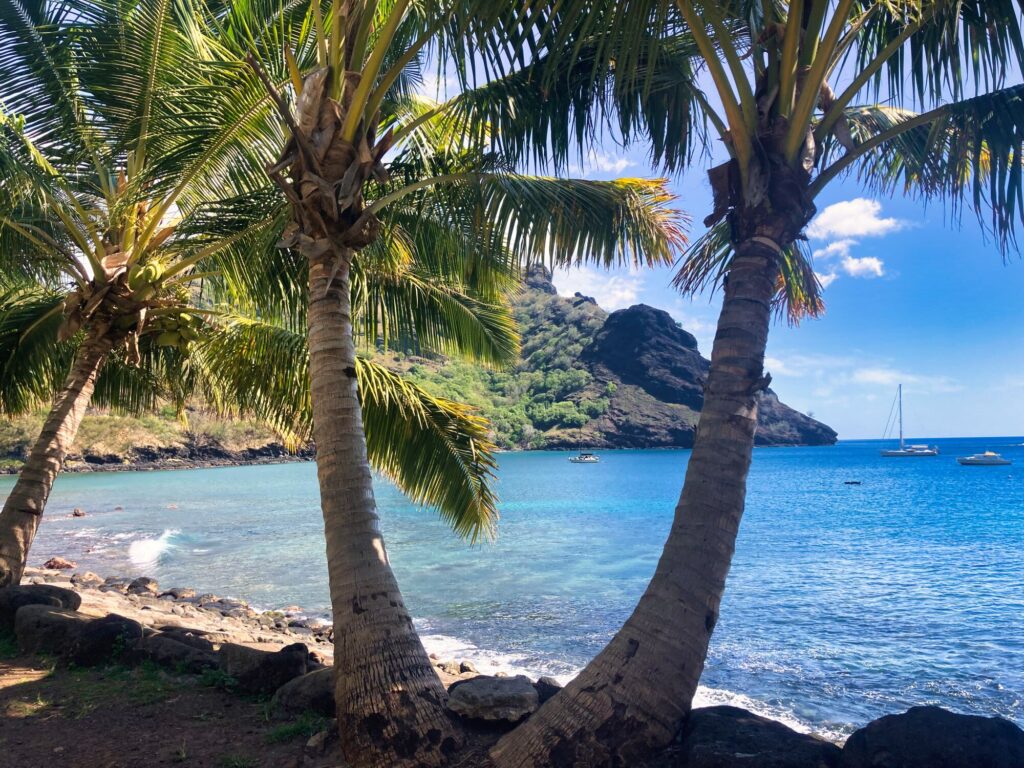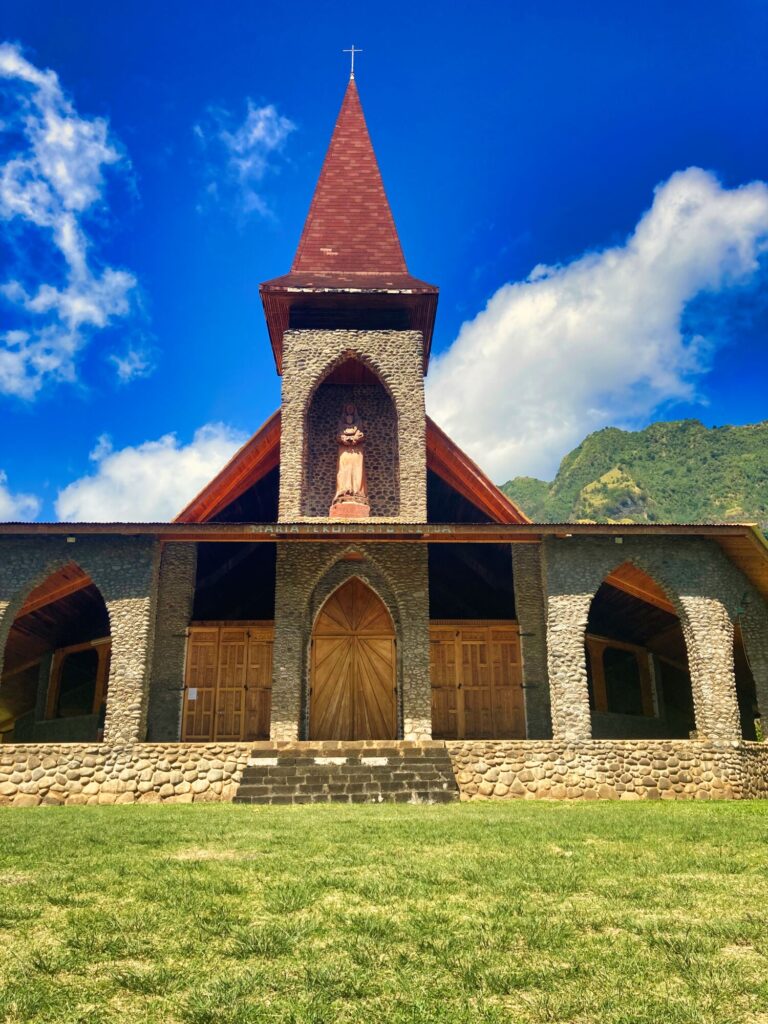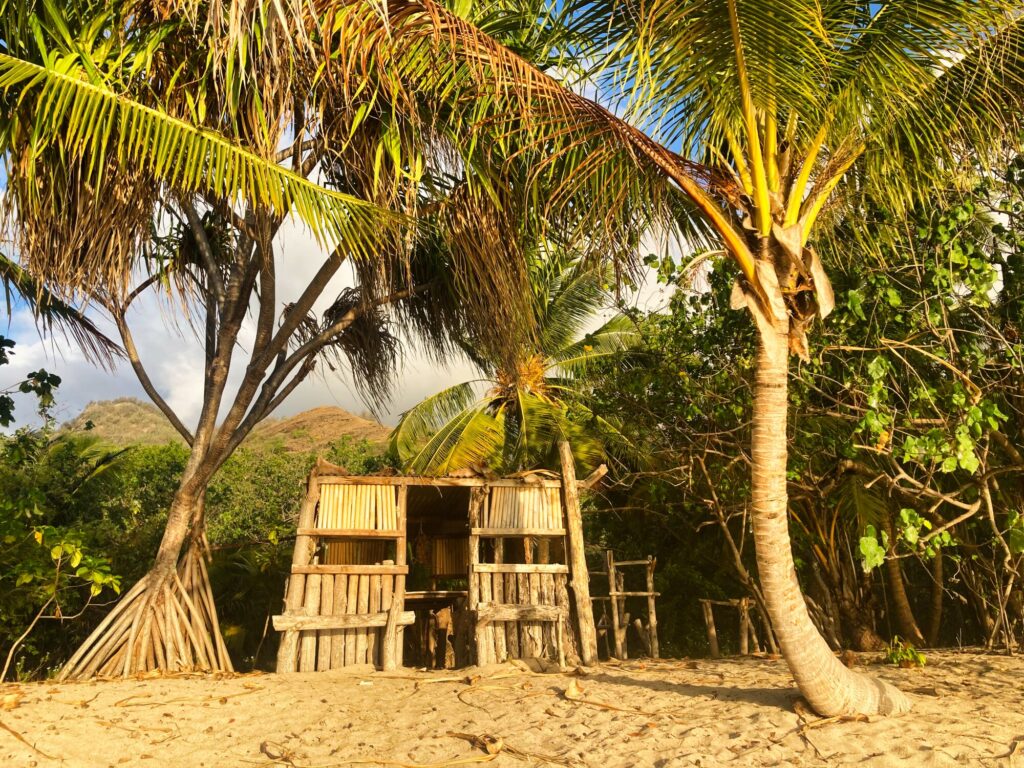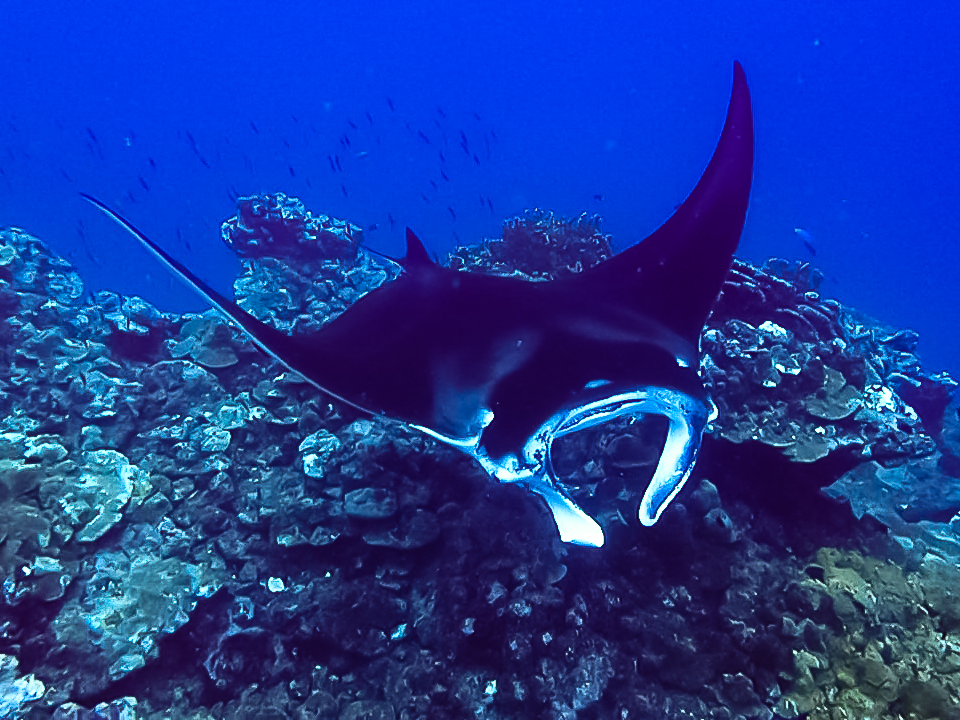We awoke at 4AM to make the voyage from Ua Pou to Tahuata, pulling all three anchors, hoisting the dinghy, and were underway by 5am. Just a few moments out of the breakwater it was clear this was going to be a wet and bumpy ride. Since we would be motoring for at least 16 hours, we began doing 2-person shifts of 3 hours on and 3 hours off with Simone and Martin taking the first shift once our course was set. Having learned from the Pacific crossing, we stored the paddle boards on deck and taped up the vent for the fresh water tank to prevent any seawater from intruding.
We spent the next several hours motoring upwind through the salt water washing machine, getting rolled and pitched every which way. The swell seemed to get better…then worse… then maybe better again? Every now and then the bow would dive into oncoming swells sending a wave of water onto the dodger. The trip was terribly uncomfortable and left much to be desired. I think we had hoped that the trip wouldn’t be that bad and we could continue onto Fatu Hiva as our final destination in the Marquesas. We had heard from a number of people that Fatu Hiva was the most beautiful and stunning of the Marquesas Islands, a hiker’s paradise, and that it would be a good place to load up on fruit before going to the next island group. To get from our next island, Tahuata, to Fatu Hiva would be another 1- to 2-day passage in the same conditions we were in now, or possibly worse. So, this trip further cemented Eitan’s unwillingness to put SV Sierra Wind through more rough days of this intensity if he could avoid it and we decided to scrap any plans for going to Fatu Hiva.
Eventually the sun set and things calmed down as we got into the lee of the neighboring islands, Hiva Oa and Tahuata. We arrived at the anchorage in Tahuata, called Hapatoni Bay, around 9pm and I was on the bow with the flood light looking for any potential obstructions as we made our final approach. The lights seemed to attract flying fish. I had never seen them below the surface of the water with each of their wings being the size of their entire bodies. We anchored next to three catamarans and fell fast asleep with complete protection from the wind and swell.
The following morning, we woke up to a tropical paradise off our stern. The island was much more lush than the others we had seen with the hillsides blanketed in palm trees. The water visibility was also the best we had seen thus far and we were excited to try some snorkeling. After breakfast, Eitan hooked up our new plaining board to the back of the dinghy and we took turns dragging each other around, using the board to dive down into the water with a flick of the wrist. With the visibility and underlying reef, it was like power snorkeling and amazingly fun.
During my turn in the water, Eitan motored over to a point between two of the bays and I spotted a big, black shape below me with a large, white mouth. It was a manta ray! I yelled for Eitan to stop and hand me my camera and we took turns diving with the giant creature while the other took pictures and held the dinghy. Suddenly, another manta ray appeared and we followed them for some time as they passed back and forth over the reef. The mantas seemed to playfully interact with Eitan, flipping upside down to expose their white bellies. We swam with them for some time and then headed back to the boat once we had our fill. I told Martin and Simone of the experience and they hurriedly swam to the point but the mantas had vanished.
We spent the next few days exploring Tahuata and a few of the different anchorages. We saw mantas almost every single time we snorkeled and each was a magical experience. Most didn’t pay you any mind and glided about as if you weren’t there. I enjoyed watching their backflip feeding, doing one flip after another. Sometimes the water was so cloudy all you could see was the white curl of their mandibles on either side of their mouths. At night, we would leave the deck lights on to attract fish and every now and then a big black shape would swoop by.
We stopped in the main town on Tahuata, called Vaitahu, to check it out. The docks at each of the main towns we had visited were concrete and primarily designed for cruise ships or interisland ships much larger than our dinghy. This dock proved to be the most difficult to take the dinghy into because, not only was there a sizable surge, but the height difference between the dinghy and the dock was about 5 feet. Martin, Simone, and I climbed up a ladder while Eitan set the stern anchor then did some serious acrobatics to get from the dinghy up onto the dock. We walked around a bit and I most enjoyed the beautiful masonry of the local church. After a couple Coca-Colas and a little Wi-Fi at a local snack, we decided to head back to the boat and move onto Hiva Oa because the dinghy situation was much too complicated to try coming in again.
So, it was onto the next island!
